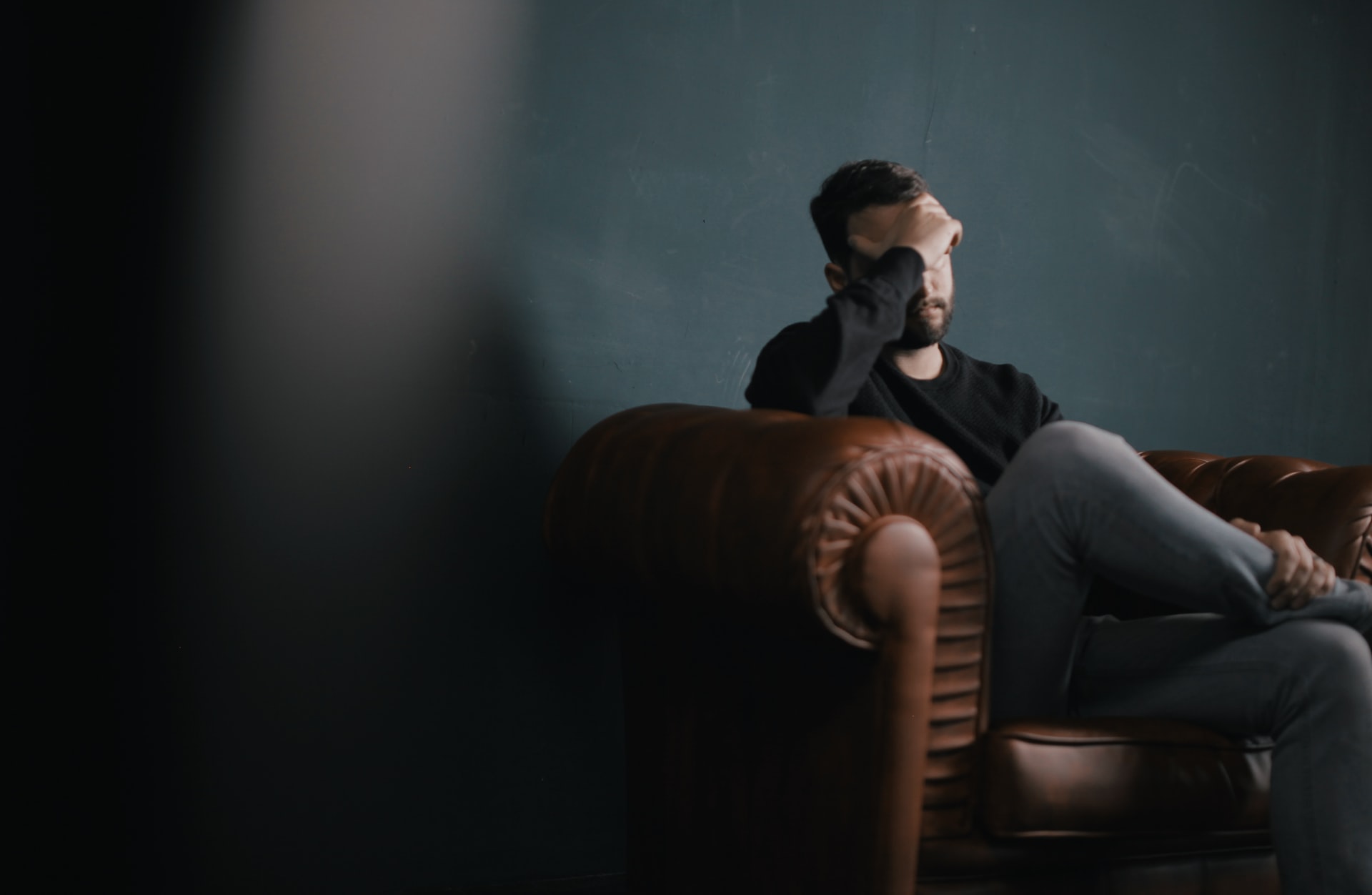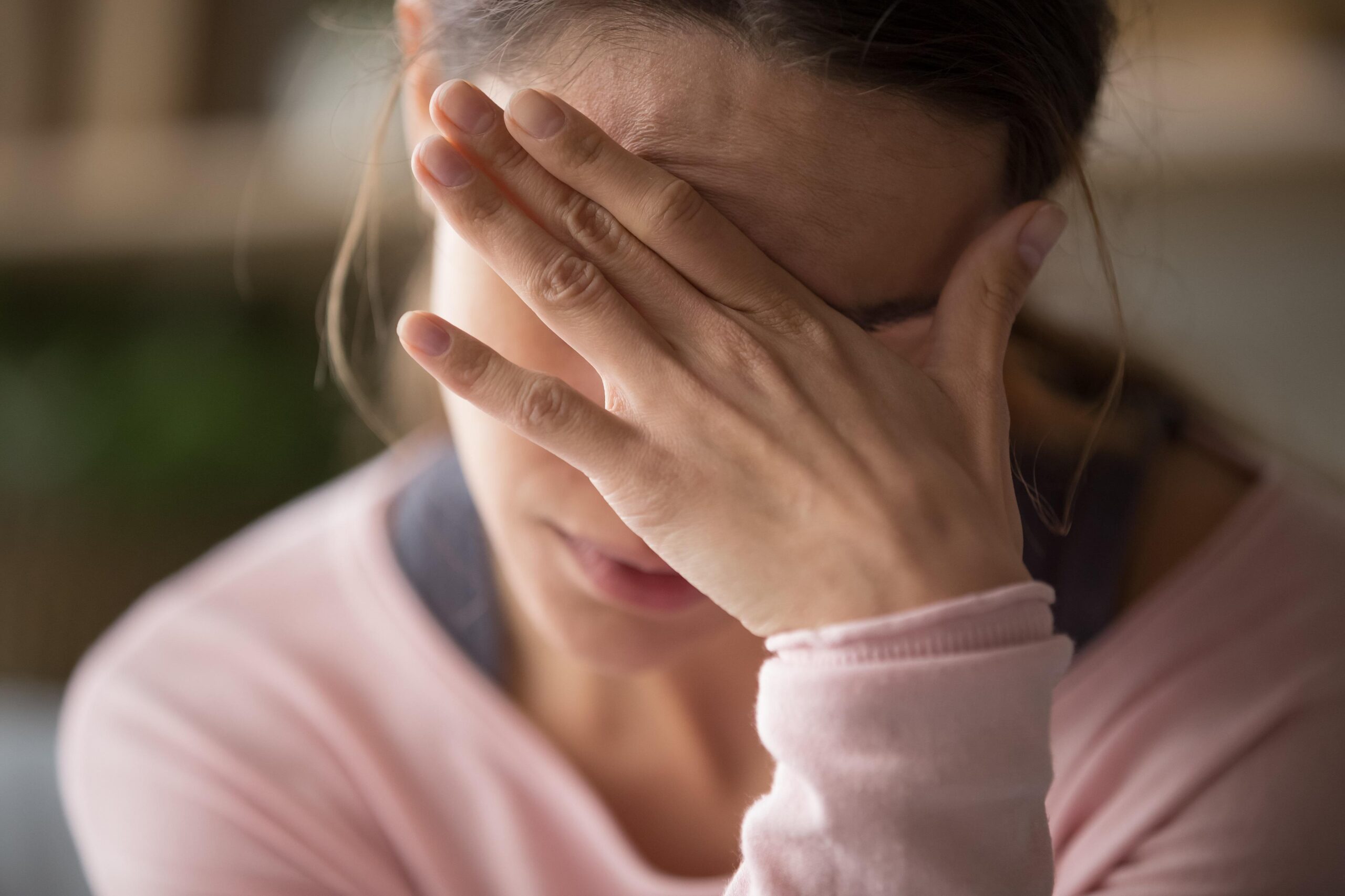CO-OCCURRING DISRODERS
ANXIETY
When someone is exposed to any form of stress, the body will always respond to the situation. Anxiety is a natural response of the body to stress, and it occurs as a feeling of apprehension or fear of what is about to come.
Usually, a bit of nerves is a healthy and normal emotion that many people experience. However, in some cases, people experience disproportionate degrees of anxiety, indicating a medical condition. As a mental disorder, anxiety results in high levels of worry, apprehension, fear, and nervousness. Anxiety disorders affect how an individual behaves and processes emotions. When anxiety is severe, it will affect the day-to-day living of a person. Our Orange County anxiety treatment center is here to help with severe cases.

Anxiety By The Numbers
Anxiety disorders are among the most highly prevalent mental disorders in the United States. They affect about 40 million individuals who are above 18 years old in the nation. In particular, this represents about 18.1% of the American population, which is affected by the condition each year.(1)
Though all anxiety diseases can be effectively treated, only about 36.9% of people with anxiety get treated for this disorder. Importantly, about 31.1% of people in the U.S. develop an anxiety disorder at some point in their life.(2)
The number of women who develop anxiety disorders are higher compared to men. Additionally, when a person has an anxiety disorder, they are more likely to visit a doctor and are six times more probable to be hospitalized for disorders of psychiatric nature compared to those who don’t have an anxiety disorder.
Adolescent Society
Anxiety is affecting a growing number of adolescents in the country. According to recent research, about 31.9% of people aged between 13-18 years have an anxiety disorder. In the same age bracket, female adolescents have a higher prevalence of anxiety disorders compared to their male counterparts. Among the children, the prevalence of anxiety disorders changes with the age of kids.


Types of Anxiety Disorders
Anxiety disorders occur in different ways in various people. Though they are related, each of these types are distinct and represents a condition that should be treated separately from the others. The following are the primary types of anxiety disorders.
Generalized Anxiety Disorder
Individuals who have this kind of anxiety condition would worry a lot about different everyday things and situations. Often, the worry includes family, health, finances, work, and other issues that are common in life.2 People with this disorder worry that something terrible could happen even when there is no justification to think so.
In various ways, this form of anxiety could affect the everyday activities of an individual. For example, an individual could refuse to drive a vehicle because of the fear they may cause an accident. It is common for individuals with this condition to seek reassurance that the negative things they are afraid of would not occur. With this disorder, sleep patterns are irregular, and patients often complain about muscle tension and headaches.
Panic Disorder
Some people experience repeated panic attacks without a particular reason which is called a panic disorder. They would have a sudden surge of anxiety or fear in particular situations where other people would not feel afraid. They would have more worries about having more attacks that they seem to have no control over.
Eventually, this disorder would result in psychological and physical distress in these individuals. In various situations, they would have particular symptoms that include rapid heart rate, shaking, and sweating.1 The fear of dying is also common to those who are affected with this condition. Chills and shortness of breath could also occur.
Phobia
Sometimes, anxiety is directed towards a given specific situation or thing, and this fear can be described as a specific phobia.1 The activities, situations, and objects that these people are afraid of are generally not harmful. In many cases, the person may understand that their fears of particular things are excessive, but would not be able to do anything about it. The fear or anxiety causes distress in individuals, and they may end up avoiding some of the things or situations that they get anxious about.
An individual could be very fearful of specific animals such as dogs, cats, spiders, and others. In other situations, a person could be afraid of flying, heights, or be anxious about injections. In this type of disorder, the fear that a person has would not be proportional to the actual situation, and the danger involved is usually exaggerated. The disorder affects the day-to-day activities of an individual. For example, a person could refuse to go for a visit to parks due to their fear of dogs.
Social Anxiety Disorder
In this type of anxiety, an individual would feel a high level of discomfort and experience significant anxiety about being looked down upon, rejected, humiliated, or embarrassed in public. Individuals who have this disorder may also be worried that people could take note of their fear and start thinking less of them due to their anxiety. Thus, these people would usually avoid such situations or learn how to endure them with high levels of anxiety.
For example, a person could have a fear of drinking in public, others may be anxious about meeting new people, and others could be extremely fearful about public speaking.1 There are also people who are afraid of being around a lot of people like in parties and concerts. They are always fearful that they might do something embarrassing.
Agoraphobia
In this anxiety type, a person would experience fear about particular situations, or they may experience a panic attack. Thus, they would try their best to avoid situations like these. An individual with this disorder would have extreme anxiety towards using planes, trains, and buses.1 They may also be afraid of open spaces, being in crowds, or enclosed places. Usually, the fear that these people have is out of proportion with regard to the actual situation, and would mostly last for at least six months.
The person would typically avoid the situations that present this anxiety. In other cases, the people with the disorder may require a companion in those situations. They may also choose to endure the situation, but with a lot of fear. If the disorder is not effectively treated, it could grow worse and make someone afraid of even leaving the house
Causes of Anxiety
The exact cause of anxiety is yet to be established. Several factors work together to establish anxiety conditions. The following are the most likely causes of anxiety in individuals.
Environmental Stress
The factors in environment are frequently the primary causes of anxiety disorders.8 These would include financial stress, relationship stress, stress at work, stress at home, and others. All these elements would make an individual develop anxiety as one would fear what could happen next.
Genetics
The genetic makeup of an individual could predispose someone to anxiety disorders. Individuals who have family members with anxiety disorders are at a higher risk to develop conditions compared to other people.8 Thus, family history may be partly useful in diagnosis.
Medical factors
Anxiety disorders could be caused by some medical conditions such as stress, diabetes, and medication’s side effects. They induce a feeling of getting worse health-wise, and could lead to anxiety.
Brain Chemistry
Some traumatic or stressful situations could alter the structure and function of the brain. This would make the brain react to those triggers that could not have produced anxiety before alterations. Disruptions to electrical and hormonal signals are known to cause mood and anxiety conditions.
Withdrawal
When an individual stops using a particular illicit drug, several withdrawal symptoms will occur. One of these symptoms could be anxiety. The person could be fearful when dealing with the situations that the environment presents.
RESTLESSNESS AND A FEELING OF BEING “ON-EDGE”
In people with any type of anxiety disorder, restlessness is a typical symptom. It is even more common in teens and children than in adults. Usually, this comes as an unpleasant desire to move.
In a particular survey that had 128 kids who had anxiety as the participants, the researchers established that 74% of the respondents indicated restlessness as being among the main symptoms of anxiety.5
In most of the cases, physicians use restlessness as an indication that a person has an anxiety disorder. If someone experiences this symptom in most of the days, and for about six months or more, then this could indicate anxiety disorder in the individual.
UNCONTROLLABLE FEELINGS OF WORRY
Excessive worrying is another symptom of anxiety that is most common and regular. In essence, this type of worrying is uncontrollable, and the people with this disorder would have little to do in alleviating the level of worry.
Additionally, this worry would be disproportionate in relation to the situations that trigger it.5 Mostly, the worry would occur in reaction to situations that are normal in the day-to-day life. The worry is usually severe and would make it hard for a person to accomplish daily chores. The feeling of worry could last for up to six months or more.
INCREASED IRRITABILITY
Excessive irritability is a common symptom that people with anxiety disorders would experience. A certain survey that consists of 6,000 adults with anxiety disorders confirmed that they are irritable. 90% of the people who took part in the study admitted feeling extremely irritable at times when their condition is at its worst. The irritability level is two times more compared to the one that self-reported worriers would experience in their day-to-day lives. The excessive worrying and high arousal that anxiety induces could assist in explaining the increased irritability in people with anxiety conditions.
TENSE MUSCLES
A person with an anxiety disorder would experience tense muscles in most parts of the week. There lacks enough explanation as to why tense muscles occur in people with anxiety despite the symptom being quite common. Some arguments suggest that muscle tension enhances anxiety, and vice versa could also be true. Importantly, muscle relaxation has been shown to improve muscle tension situation and also lowers the worry level in the patients.
SLEEP DIFFICULTIES
Individuals with anxiety disorders experience sleep disturbances from time to time. Mostly, these people have problems falling asleep. In other cases, they wake up at night and fail to go back to sleep.
In several studies, insomnia has been linked with anxiety disorders. For example, having childhood insomnia could contribute to the development of anxiety in the later stages of life. In a particular study, the researchers followed 1,000 children for at least 20 years and established that childhood insomnia is likely to increase the risk of having an anxiety disorder by about 60% by the time people reach 26 years of age. However, this observation has not been sufficiently proven, and a discussion surrounding it is still there.
On the other hand, when anxiety in an individual is treated, the situation of insomnia also improves in the person, which this indicates their connection.
CONCENTRATION DIFFICULTIES
Most individuals who have anxiety disorders experience concentration difficulties. A particular study that used teens and children with anxiety established that at least two-thirds of the study population had concentration difficulties. In another study involving adults with anxiety conditions, the survey found that about 90% of the population indicated experiencing concentration problems as one of their symptoms. When the anxiety gets worse, then their concentration would reduce significantly.
Primarily, anxiety could interfere with working memory whose purpose is to hold short-term information. Thus, with periods of high levels of anxiety, the performance of people frequently declines. It is, however, essential to note that concentration difficulty could be as a result of other disorders including depression or attention deficit disorder. Thus, it should not be used by itself during the diagnosis of anxiety disorders.
Prevention of Anxiety
Sleep
Adequate rest is essential for people. It allows the mind and brain to settle down. In the end, this helps prevent the development of anxiety disorders.
Diet
Diet also plays an essential role in the prevention of anxiety. Individuals who have high risks of developing anxiety disorders should avoid certain food products or reduce their intake. A healthy and balanced diet would lower risks associated with anxiety disorders, and this would prevent the occurrence of these disorders.
Avoiding Substances
The use of drugs and other substances are closely related to anxiety. Withdrawing from the abuse of drugs leads to various effects, including anxiety. Thus, avoiding these substances in the first place would eliminate the chances of developing anxiety.
Reducing Caffeine and Other Stimulants
Stimulants increase the chances to develop anxiety conditions. Therefore, reducing the consumption of chocolate, cola, tea, and coffee could assist in preventing the occurrence of anxiety disorders.
Regular Exercise
Physical activities help elevate moods, and thus, could reduce the occurrence of anxiety disorders.7 With exercises, brain activity is improved, and it can cope with stress in a better way. Physically active people show decreased chances of having anxiety and depression.

Resources
- ADAA. (2017). Facts & Statistics. Retrieved on 12 June 2019, from
APA. (2017). What Are Anxiety Disorders? Retrieved on 12 June 2019, from
Bandelow, B., & Michaelis, S. (2015). Epidemiology of anxiety disorders in the 21st century.
Dialogues in clinical neuroscience, 17(3), 327.
CDC. (2019). Data and Statistics on Children’s Mental Health. Retrieved on 12 June 2019, from
https://www.cdc.gov/childrensmentalhealth/data.html
Julson, E. (2018). 11 Signs and Symptoms of Anxiety Disorders. Retrieved on 12 June 2019, from
https://www.healthline.com/nutrition/anxiety-disorder-symptoms#section7
NIH. (2017). Any Anxiety Disorder. Retrieved on 12 June 2019, from
https://www.nimh.nih.gov/health/statistics/any-anxiety-disorder.shtml
Schoneveld, E. A., Lichtwarck-Aschoff, A., & Granic, I. (2018). Preventing childhood anxiety disorders: is an applied game as effective as a cognitive behavioral therapy-based program?
. Prevention Science, 19(2), 220-232.
Snyder, M., & Zubernis, L. (2016). Understanding Generalized Anxiety Disorder: Effective Case Conceptualization Using the Temporal/Contextual Model.
American Counseling Association.
SAFE HARBOR TREATMENT CENTER
SEEK PROFESSIONAL HELP
Know when it’s time for you to reach out for help. If your anger seems out of control, causes you to act out, and later regret it, or your anger hurts people around you, it’s time to seek professional help. If you, or someone you live is struggling with depression, help is available and recovery is possible. Safe Harbor can help with recovery from substance use disorders, depression and other co-occurring diagnosis. Call for help today.

